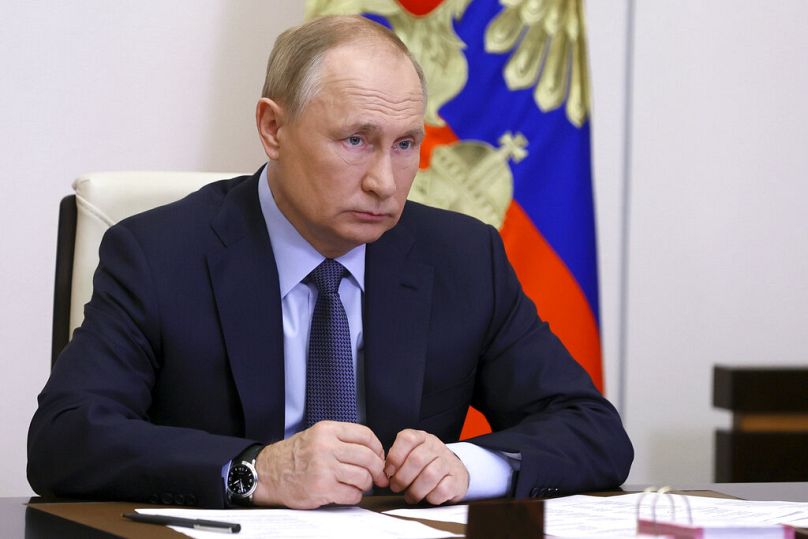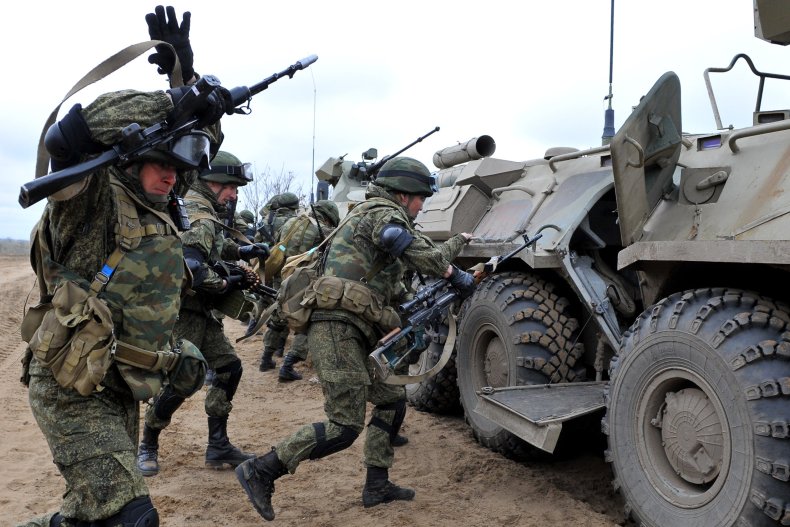Russia-Ukraine conflict: What's happening and how is US getting involved
The US prepares to deploy troops to Europe again, as sanctions threat may fail to deter Putin with Russian buildup now a major concern for the West
meaww
January 26, 2-22
If you've been reading the news, or even casually scrolling social media of late, there's one topic you can't escape. It's not the pandemic, but rather Ukraine. The small European nation that was at the center of Donald Trump's first impeachment scandal is back in the news, and this time it doesn't have to do with Trump. The United States and its allies are currently involved in a standoff with Russia over Ukraine, sparking fears of war.
The crisis has quickly snowballed from a diplomatic standoff to one of possible military intervention. Months after President Joe Biden pulled the troops out of Afghanistan, several are now on alert and could be deployed to Europe. It comes after Russia has begun amassing troops of its own near its border with Ukraine, years after annexing Crimea. Concerns have escalated not just in Europe, but also in Asia with China getting closer and closer to Taiwan, and in the Middle-East, over the war in Yemen.
Right now though, all eyes are on Ukraine, where conflict is likely to break out first. The Biden administration has begun moving swiftly, working with its allies on a range of options from financial and economic sanctions to all-out war. If you are wondering what exactly is going on, here's a brief overview of the Ukraine crisis.
What's going on in Ukraine?
Roughly the size of Texas, Ukraine borders Russia to its East and was a part of the former Soviet Union. In 2014, pro-Russian separatists began seizing government buildings in Crimea, a small peninsula in the Black Sea (south of Ukraine) that was a Ukrainian region with special autonomy and several Russian military bases. The Russian assault began in February, and by March, a vote was held in which Crimeans voted to secede from Ukraine and become part of Russia.
At the time, most of the west including the US called the takeover and vote as illegitimate, but beyond a few economic sanctions didn't take many actions against Russia. It's unclear if those decisions have emboldened Putin, but many experts believe it certainly played a role in the current crisis. In 2021, it seems Russia wants more than Crimea, but that depends on who you ask.
Since late 2021, Russia has begun amassing troops very close to the Ukrainian border. On January 19, US Secretary of State Antony Blinken noted that Russia has "ratcheted up its threats and amassed nearly 100,000 forces on Ukraine's border, which it could double on relatively short order." Satellite photos show tanks, guns, infantry vehicles, and more roughly 186 miles from the current border. Days later, it was estimated to be around 127,000 troops including air and sea personnel.
Ukraine also claims Russia has 35,000 rebels and 3,000 of its own military personnel in the Eastern part of Ukraine, an allegation Russia has denied. The Kremlin has called all the claims "Western hysteria" and says the buildup is simply part of regular military drills. But the uncertainty over what will happen has prompted both sides to vastly increase their military presence, while diplomatic situations are being worked out.
Russia and Ukraine's views
Russia claims that it does not want to invade Ukraine and that its buildup is in response to NATO's growing reach in Eastern Europe. Russian President Vladimir Putin has made several requests, key amongst them being that NATO should rule out any further expansion eastwards. He also wants NATO to stop supplying Ukraine with sophisticated weapons, and a guarantee that the country never formally joins NATO. Russia says NATO poses a major "security concern", which is what has prompted the current crisis to escalate.
But some experts believe there's more to the story. "He is personally, deeply and emotionally invested in recovering Russia’s former power over his neighbors," one expert told NBC. Many believe Putin wants to re-integrate Ukraine into Russia and return the country to the Soviet Union. Those stem from old statements, where he called Ukraine's independence an "artificial construct" and the breakup of the Soviet Union "the greatest geopolitical catastrophe of the century."
As far as Ukraine is concerned, it wants Russia to stop interfering in its affairs. "Russia cannot stop Ukraine from getting closer with NATO and has no right to have any say in relevant discussion," the Ukrainian Foreign Ministry told CNN. The country's President, Volodymyr Zelensky, has also alleged that Russia is working on a coup plot to overthrow his government. "External military pressure goes hand in hand with domestic destabilization of the country," said Ukrainian Foreign Minister Dmytro Kuleba.
Sanctions and diplomacy being debated
 “It’s one thing if it’s a minor incursion,” Biden told a news conference on January 19
“It’s one thing if it’s a minor incursion,” Biden told a news conference on January 19
All countries have joined with the US to threaten sanctions if Russia moves on Ukraine, but at the moment, it appears that Putin holds the upper hand on that front. Russia is a major supplier of gas to Europe, and should he cut those supplies, the continent will be left freezing in winter. To ease those concerns, the US is working with other allies to arrange alternative sources, such as Qatar. But such a move would nonetheless cause gas prices to rise globally, including in the US where Biden is already facing challenges with inflation. Therefore, such an option is seen as less preferable by all of America's allies.
Allies are also weighing targeting other sectors of the Russian economy, such as software and hardware. "These are sectors that Putin himself has championed, as the way forward for Russia to diversify its economy beyond oil and gas. And so that would lead to an atrophying of Russia’s productive capacity over time," an official told The Guardian on the matter. Again though, it might not have the effect the West is hoping, since Putin could simply arrange alternative buyers in China, or Africa, where Russia has also become very active.
Biden said he would also consider personal sanctions on Putin. But again, it may not be of much effect given that Russia effectively has the upper hand. If it fails, then the West could be forced to put boots on the ground, for which it is already making preparations. The US and UK have reduced staffing at their embassies in Kyiv, ordering some staff and dependents back home.
Military on the move
Since mid-January, US allies have begun seriously considering war as a possible prospect. Hundreds of anti-tank Javelin missiles have been shipped from the US to Kyiv, and more are expected to come in from Estonia very soon. Estonia also plans to send howitzer guns, if Germany and Finland (who originally sent them to Estonia) approve. Latvia and Lithuania are supplying anti-aircraft Stingers, and the UK has sent 2,000 anti-tank missiles and Saxon armored cars. Turkey has also joined in, reportedly sending Bayraktar drones.
Troops are also being readied. On January 24, the Pentagon confirmed 8,500 troops are on "heightened alert" and ready to deploy if need be. This is in addition to the already estimated 70,000 troops in Europe, serving different roles. Pentagon spokesman John Kirby noted that the 8,500 troops would be to "bolster NATO's quick response force", but he didn't rule out other situations.
There are currently 40,000 troops as part of NATO's Response Force in Europe, coming from its many different members. While no final decision has been made on their exact role, it appears Biden prefers the troops be sent only to provide support and deter Russia. Fighting on the frontlines seems out of the question, at least for now. Of course, war is a last-ditch option, something both sides would be keen to avoid given that they are both nuclear-powered.


1 comment:
Looks like the Contractors (Soldiers of Fortune) and weapons manufacturers will be going back to work. Nothing better for the economy like the threat of war. I had a friend that worked as a contactor in Serbia during the early 90's. Made a piss pot full of money. Made connections and has worked for the DOJ for nearly 20 years.
Post a Comment